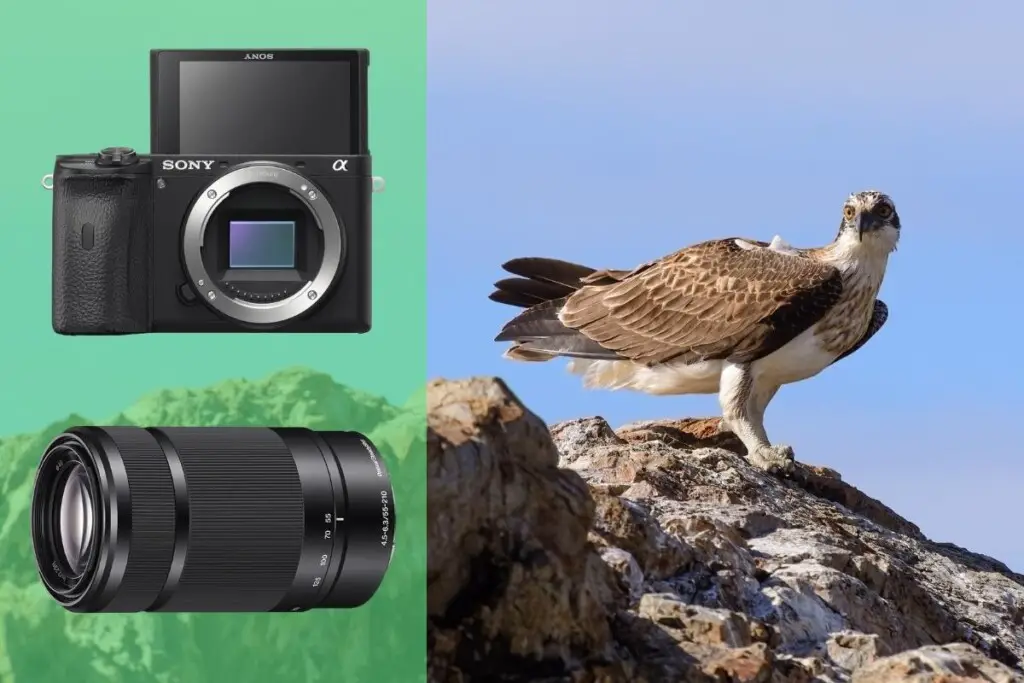No doubt you have been scouring the internet, looking at fabulous bird photos and you want to take some of your own. You are probably wondering how much zoom you need for bird photography. I have been taking bird photos for over 7 years and used multiple focal lengths and in the paragraphs that follow, I’m going to give you the answer to this question and so much more.
As a general rule, you will need a 200mm or greater focal when starting out with bird photography. Factors such as how close you can approach the birds, how they behave, and how big you want them to be in the frame will affect which focal length you need. 200mm is a good focal length for beginners.
Keep reading to learn why 200mm is a great starting focal length. We’ll also discuss other focal lengths and their pros and cons and provide a link to our budget lens recommendations.
Understanding Focal Length
200mm is not a measurement of the physical length of the lens but an optical measurement.

As shown in the diagram above, the focal length of any particular lens is the distance from the optical center of the lens (or nodal point) to the image plane (or the sensor) indicated by the symbol ɸ on the camera body.
However, a 200mm lens is not a 200mm lens on every camera. To understand this, we need to take a look inside the camera at the sensor.
Learn the focus mode to use for bird photography in this article on my blog.
DSLR Camera Sensors
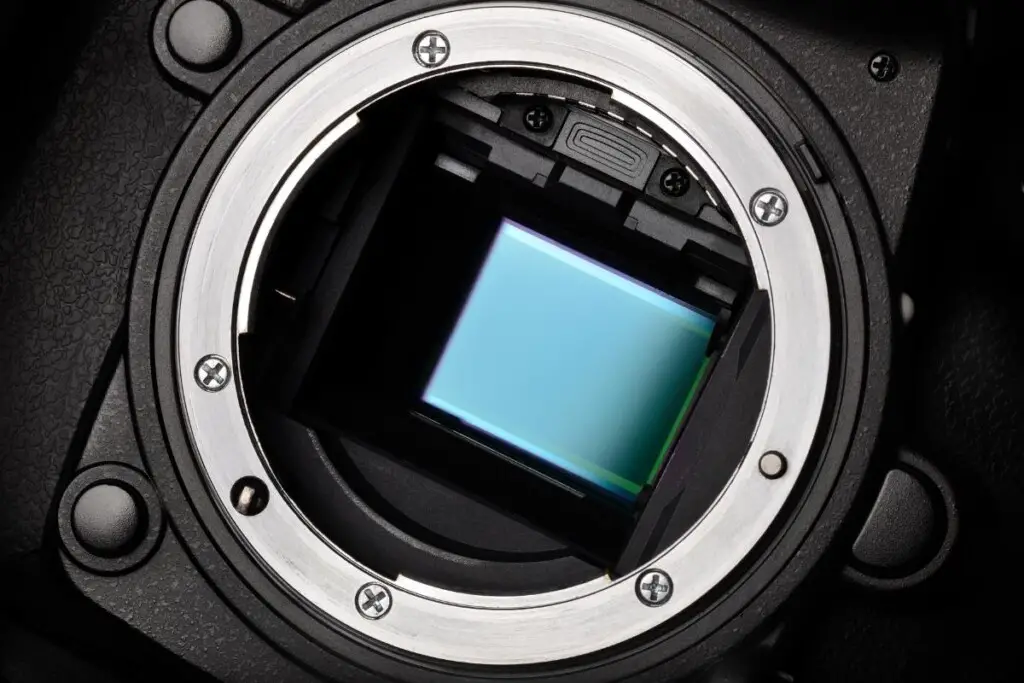
There are many different types of sensors and they are all different sizes. In addition, the size of your sensor has an effect on the focal length of your lens.
Below you can see a table containing common camera sensor sizes:
| Sensor Type | Crop Factor | Width (mm) | Height (mm) |
| Full Frame (Nikon/ Sony/Canon) | 1x | 36.0 | 24.0 |
| APS-C (Nikon/ Sony/Pentax) | 1.5x | 23.6 | 15.6 |
| APS-C (Canon) | 1.6x | 22.2 | 14.8 |
| Micro 4/3 (Olympus/ Panasonic) | 2x | 17.3 | 13.0 |
The important column in the table above is the Crop Factor column. Smaller sensors crop the image coming into the camera by certain multiples.
Take a look at the sensor size comparison below:
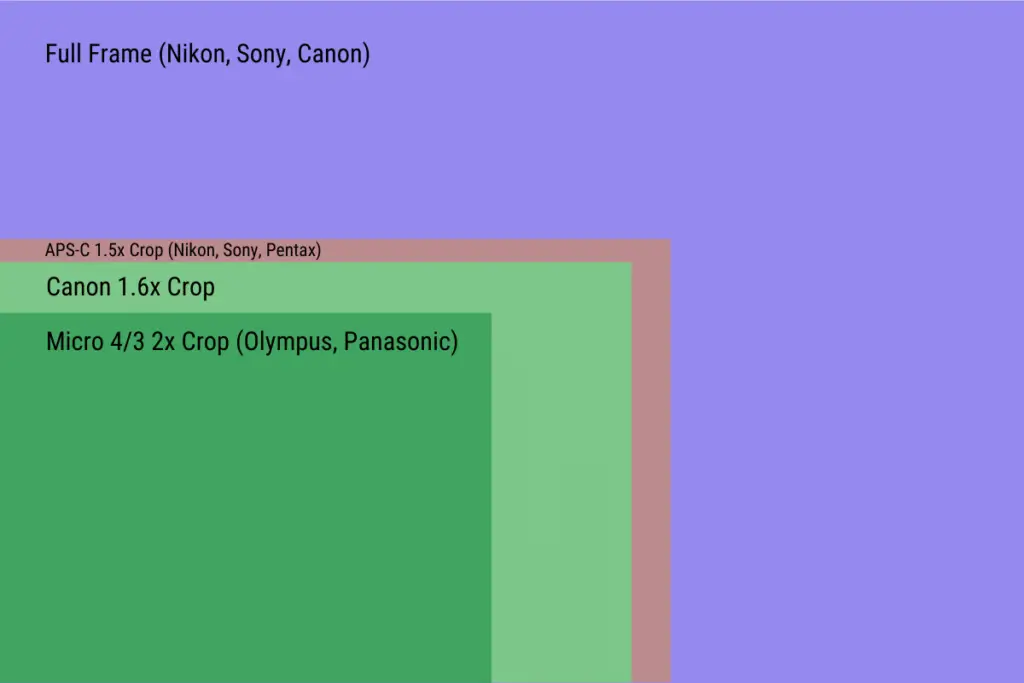
So what does this do to the focal length of your lens?
Any lens you put onto a full-frame camera stays the same focal length. A 50mm lens on a full-frame camera behaves like a 50mm lens.
A 50mm lens on an APS-C sensor with a 1.5x crop becomes a 75mm lens. You simply multiply the focal length by the crop factor.
50mm X 1.5 = 75mm
How To Figure Out Your Sensor Size
How do you know if you have a full-frame camera, an APS-C camera, or a micro 4/3 camera?
If you are not sure if your camera is full-frame or not then it most likely isn’t. Full-frame cameras are expensive and not many beginners purchase them as their first camera.
The easiest way to figure out the size of the sensor in your camera is to do a Google search like the example below:
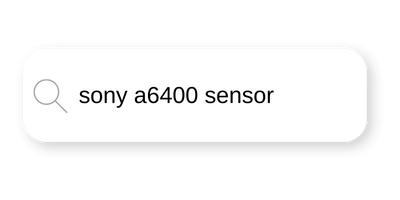
Having a crop sensor provides you with a bit of extra zoom. A 200mm lens on a full-frame camera effectively becomes a 300mm lens.
Find out why your bird photos are blurry in this article right here on the site.
Focal Length Vs Magnification
All we’ve looked at so far means nothing without understanding how much each lens magnifies what you’re photographing.
On a full-frame camera, a 50mm lens gives you magnification similar to that of our eyes, hence 1x magnification. A 100mm lens magnifies by 2x and a 200mm lens magnifies by 4x and so on…
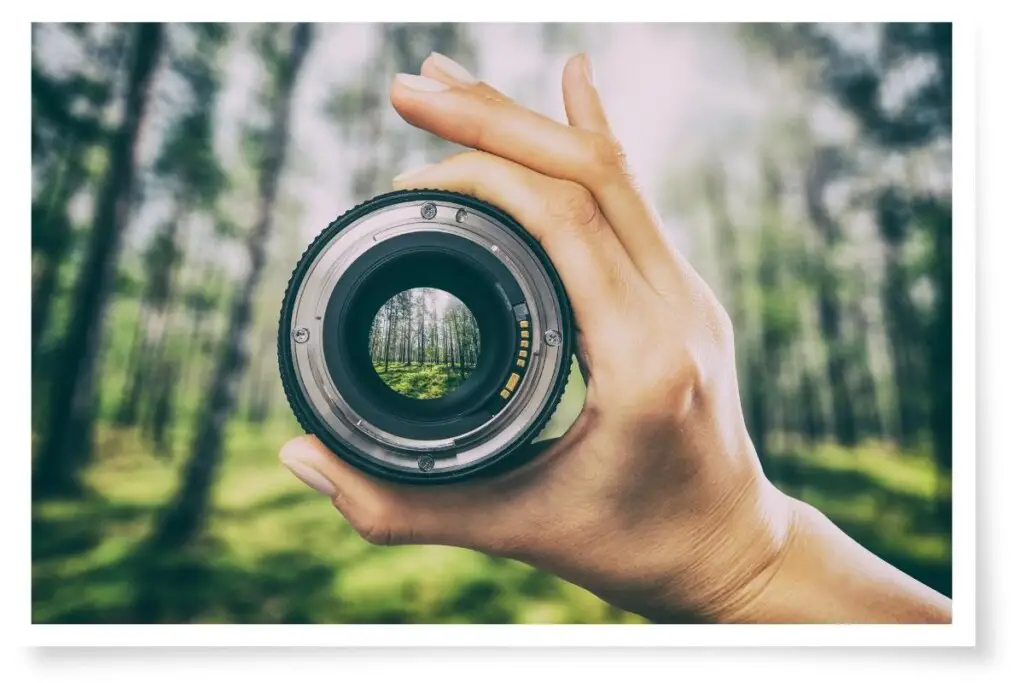
For a full-frame camera, you simply divide the focal length of the lens by 50 to determine the magnification.
So if you are photographing a bird with a full-frame camera using a 200mm lens, it will look 4 times larger through the viewfinder than it did with your naked eye.
But what if you have a crop sensor camera?
Focal Length Vs Magnification For Crop Sensor Cameras
Let’s say that you are using the same 200mm lens. Remember that the crop sensor actually crops the image down thereby multiplying the focal length of your lens by 1.5.
You can either do the following sums:
200mm X 1.5 = 300mm
300mm ÷ 50 = 6x magnification
Or, you can simply divide the focal length of the lens by 33⅓:
200mm ÷ 33⅓ = 6x magnification

If you’re learning all this for the first time and you’re freaking out…don’t! This cropping effect sensors have is actually a good thing for bird photographers. Cameras with a crop sensor allow you to use shorter focal lengths while still enjoying the benefits that come with much more expensive longer focal length lenses.
Discover the key gear and settings for bird photography in this article on my blog.
Is 200mm Enough For Bird Photography?
A 200mm lens is enough for bird photography if you are a beginner. A lens of this focal length is a good tool on which to hone your bird photography skills before you progress to a longer focal length. It is important to learn the basic skills before progressing to a longer focal length lens.
The reason I suggest using a 200mm lens when just getting into bird photography is that anything longer than that is just going to be too much.
It’s like riding a bike. When you first started you needed training wheels while you got the hang of balancing and pedaling at the same time.
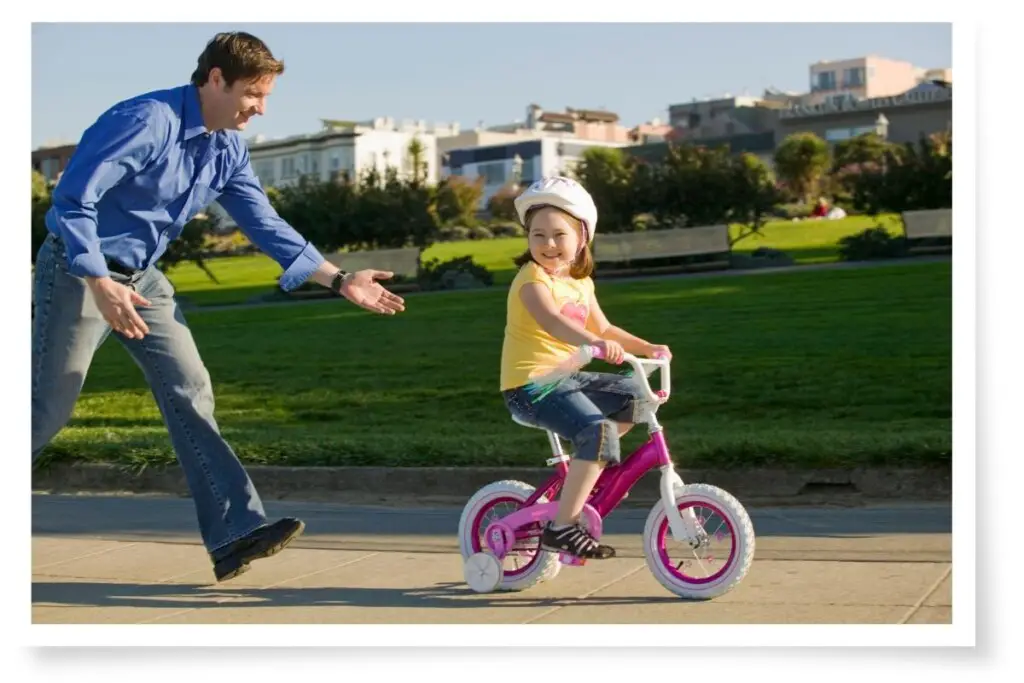
Think of the 200mm lens like training wheels. Once you get the hang of using that and are taking some great shots, then you can move on to longer focal lengths.
Also, long lenses around 400mm and above can get quite heavy and require more equipment such as a tripod or monopod. Starting smaller is the best way to do things on a budget.
Should you use a tripod for bird photography? Find out in here.
Images Taken With A 200mm Lens
Can you get close enough to birds with a 200mm lens though? Yes, you can. All of the following images below were taken with a 55-200mm lens:
Taken At 160mm (not cropped during editing)
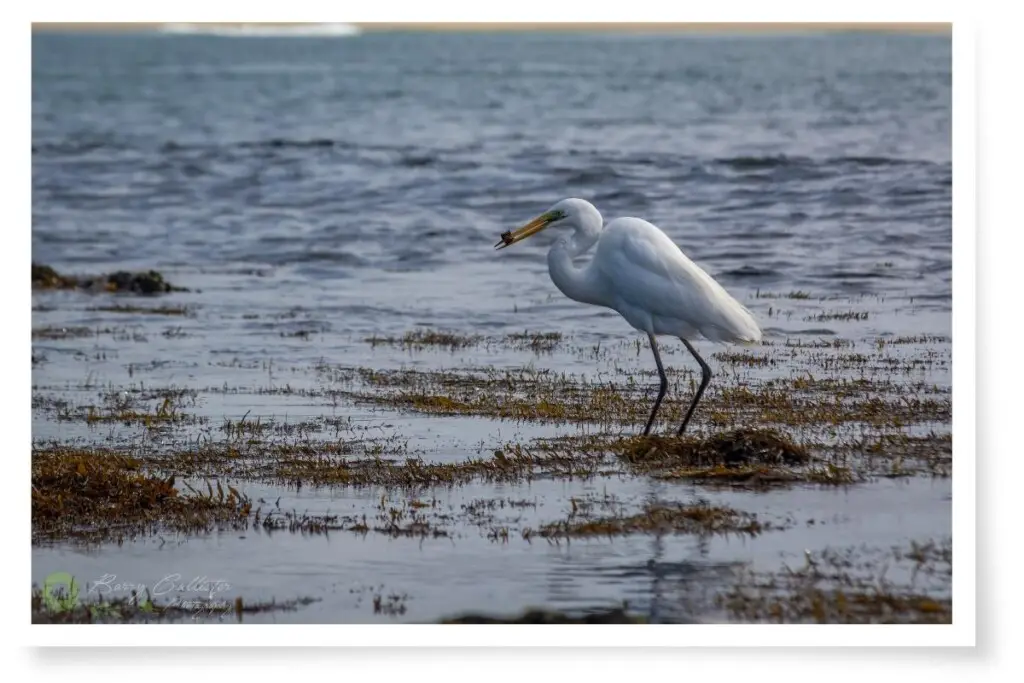
Taken at 180mm (not cropped during editing)

Taken at 98mm (cropped slightly during editing)
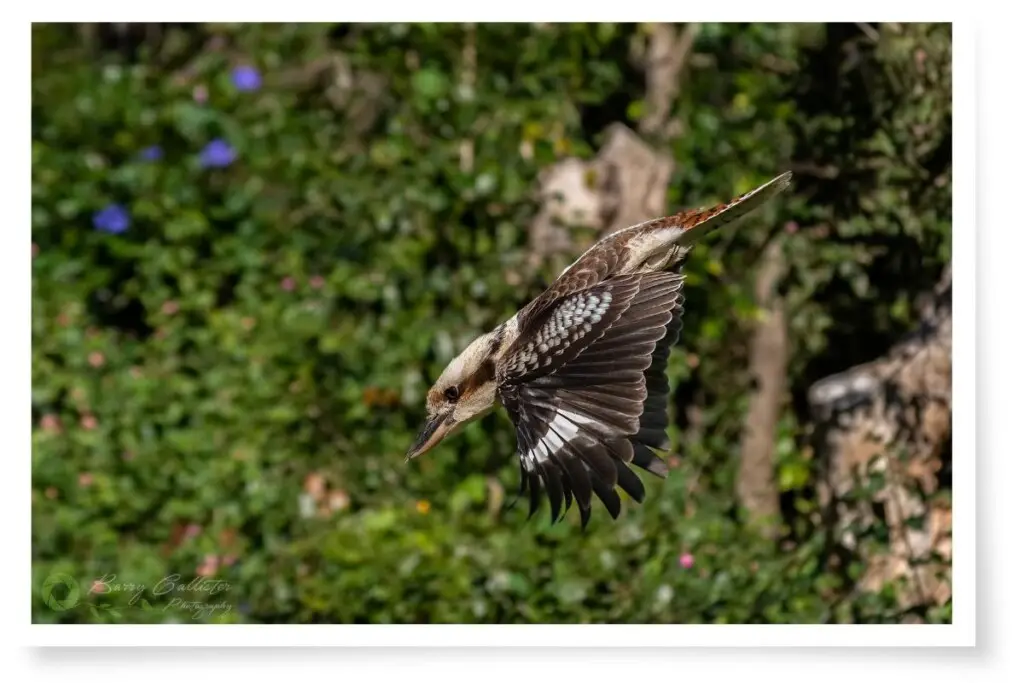
An added bonus of using one is that you get to practice your stalking! You will learn how to get closer to the birds without disturbing them.
Lens Recommendations
If you are a Sony user, I have a value-packed article with top ideas for bird photography gear on a budget that you can read:
I am currently working on articles packed with great budget bird photography lens recommendations for other camera brands. When they are done, I will link them here.
References
- A Guide to Birding with Long Lenses – bhphotovideo.com

